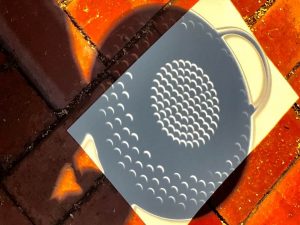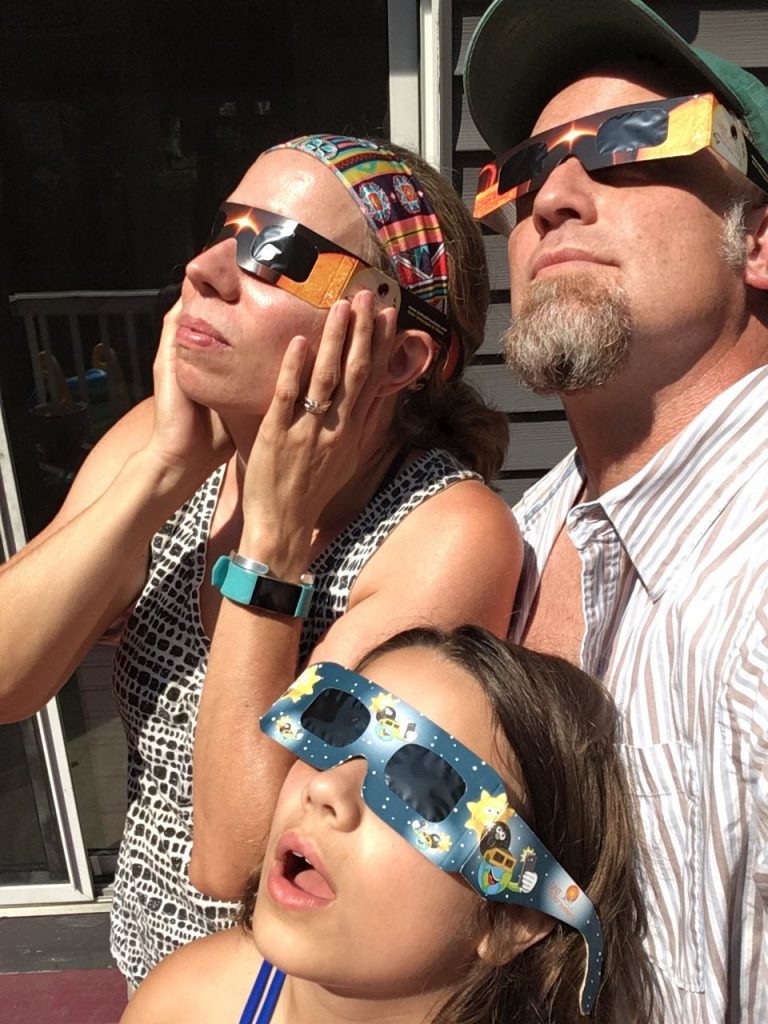The solar eclipse may have lasted only a few short minutes at its peak, but those in the “zone of totality” yesterday were making the most of it.
The Episcopal News Service reports
“It’s like you are looking at perfection. It’s just an amazing experience,” said the Rev. Alice Nichols, rector at Grace Episcopal Church in Hopkinsville, Kentucky.
The city had marketed itself as “Eclipseville” because it was the point where the moon’s shadow took its most direct aim at the Earth during the total eclipse. The church, meanwhile, had marketed itself as a prime viewing site, and the Grace Episcopal viewing party drew about 35 people, including some from as far away as New York.
The weather was ideal, Nichols said, and the experience spiritual.
“It was like a moment of seeing the holy,” she said. “And you had nothing to do with it. It was just a gift.”
Churches organized watch parties, distributed solar viewing shades, and raised money through renting out parking spaces and campsites. The Diocese of Georgia closed its offices at noon so that its staff could enjoy the eclipse, and a conference from Kanuga celebrated the Eucharist as the light returned:
When organizers of the ecumenical Faith, Art and Creative Expression: A Liturgical Arts Conference saw their 20th anniversary conference this year would straddle eclipse day, they chose as their theme “Darkness Transformed Into Light.” It is being held in Hendersonville, North Carolina, at Kanuga, a conference and retreat center with Episcopal roots. Kanuga was out of the path of totality, but the 40 or so conference participants took a bus trip Aug. 21 to Greenville, South Carolina, to experience the total solar eclipse.
They gathered there at St. Peter’s Episcopal Church for prayer, music and a picnic lunch before the skies darkened as the moon began passing in front of the sun.
For about an hour leading up to the total eclipse, “it was a very sweet kind of meditative time,” conference coordinator Lark Howell said. Then as soon as totality ended, the group began a worship service and celebrated the Eucharist, the day getting brighter and brighter as the service progressed.

For PennLive, John L. Micek reflected on the hype, the reality, and turned to the Book of Common Prayer to give voice to the experience.
Back at the office, the eclipse underway, my colleagues, those cardboard glasses over their eyes, were straining at the sky. One of them handed me a pair and I looked upward.My breath caught. Whatever trace of my cynicism that remained evaporated.
Amazing. There really wasn’t any other word for it.
We weren’t yet at peak, but the moon had already taken a deep bite from the sun, leaving a bright yellow crescent. It was breathtaking.
The skies gradually darkened. And by 2:30 p.m, we were all outside, oohing and ahhing, and passing the glasses between us.
Someone turned on the darn Bonnie Tyler song, it didn’t matter.
In that moment, there was no better reminder of our fleeting time on what the Episcopal Book of Common Prayer so artfully describes as “this fragile Earth, our island home.”
That same book also tells us we’ve given dominion over the Earth. But we’re kidding ourselves. The eclipse, and the forces that moved it, are a reminder that we’re only renting.
Read more at the Episcopal News Service and PennLive. Did you celebrate the natural phenomenon yesterday? What did you see and experience?
Featured image: The Revd Jon M. White, managing editor of the Episcopal Cafe, watches the eclipse with his family

